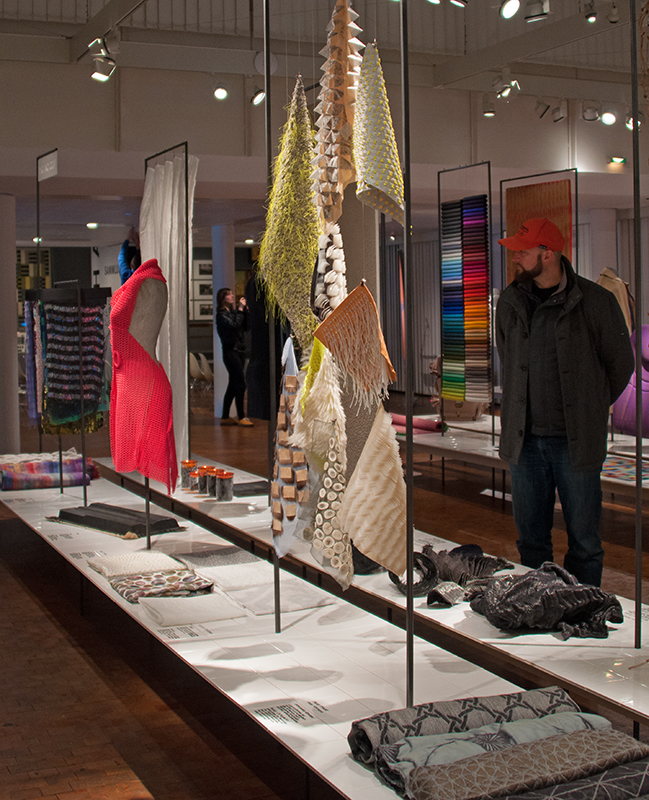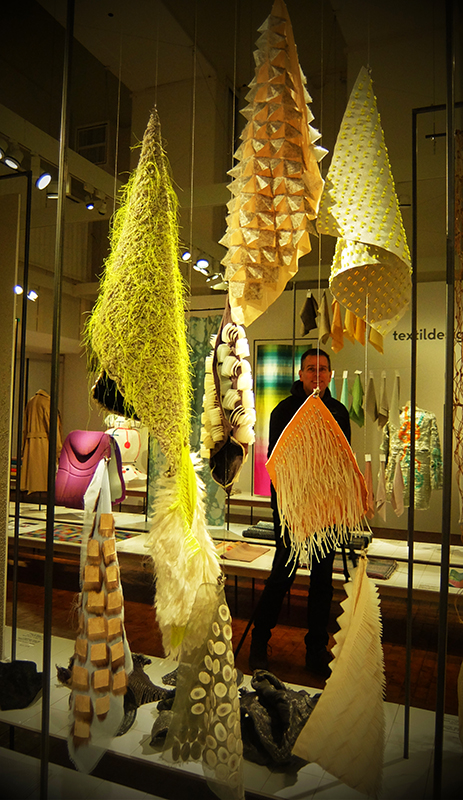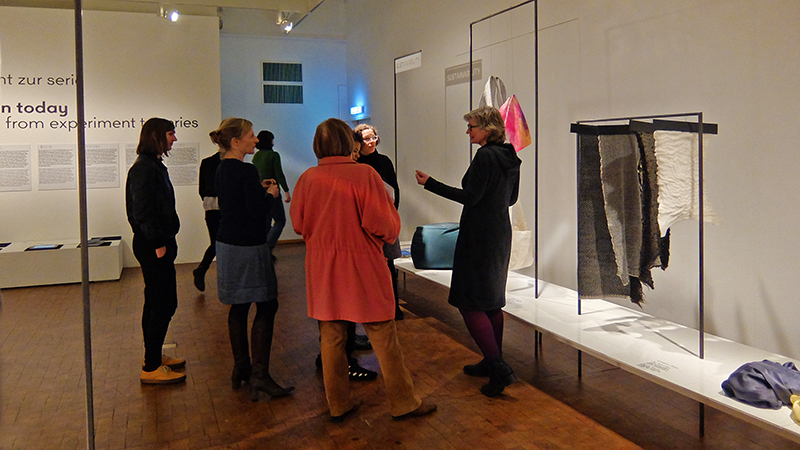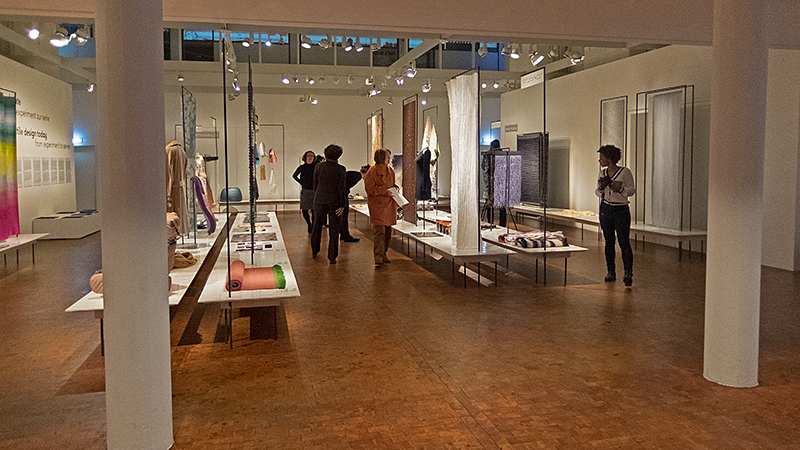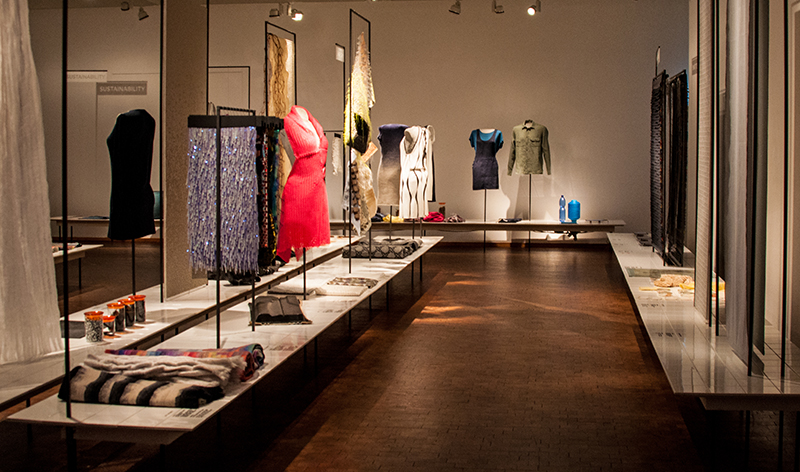
Das Bauhaus-Museum in Berlin widmet sich einmal im Jahr der modernen angewandten Gestaltung. Im letzten Jahr war es die Fotografie, jetzt das Textildesign. Die Ausstellung – konzipiert von Prof. Bettina Göttke-Krogmann und ausgeführt von Corina Forthaber – ist klein aber fein. Gut ausgedacht und unter Berücksichtigung aller wesentlichen Aspekte zeigt diese Ausstellung acht Gestaltungsbereiche (1. Tradition, 2. Kulturtransfer, 3. Farbe, 4. Material, 5. Technik, 6. ‘Smart Materials’, 7. Neue Technologie und 8. Nachhaltigkeit). Entsprechend dieser Einteilung wird die Ausstellung auf acht Tischen, jeweils 8 Meter lang, dargeboten. Gezeigt werden Beispiele aus der Industrie, aus kleinen Werkstätten und Manufakturen neben Unikaten von Textildesignern und Studenten der Textildesignabteilung der Burg Giebichenstein. Die Bandbreite der ausgestellten Objekte erstreckt sich von innovativen und nachhaltig produzierten Stoffen aus recycelten Kunststoffen und natürlichen Rohstoffen über 3D-gedruckte Bekleidung und funktionsorientierte ‘Smart Textiles’.
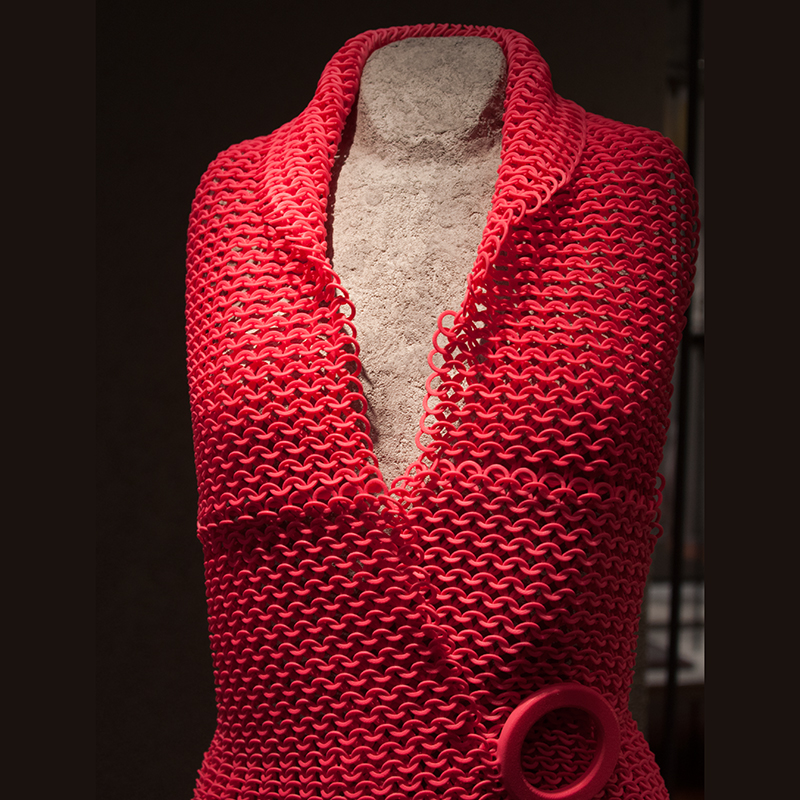
Die Mischung aus altbekannten Namen und jungen Gestaltern macht die Ausstellung spannend und frisch. Es war auch ermutigend zu hören, dass heute von 10 Studierenden mindestens 7 eine Anstellung in der Industrie erhalten. Prof. Göttke-Krogman erzählte, dass dieses Verhältnis in ihrer Studienzeit 3 beruflich Erfolgreiche auf 10 Studierende betrug. Arbeitgeber für Textildesigner sind heute meist die Auto- und Flugzeugbau-Industrie, während Textilverlage und Textilproduzenten in Anzahl und Größe immer noch abnehmen.
Die Direktorin des Bauhaus-Museums, Annemarie Jaeggi, verwies auf die Verbindung zwischen der ehemaligen Ausbildungsstätte des Bauhaus (ab 1915) und der jetzt noch existierenden Burg Giebichenstein (seit 1919). Es stimmt, dass es eine große Übereinstimmung dieser beiden Institutionen gab. Aber was ist heute von den damaligen revolutionären Grundsätzen übrig geblieben? Heute arbeiten auf der Burg die Textilabteilung, die Textilkunstabteilung und die Modeabteilung jeder für sich. Die zwei letztgenannten kommen in dieser Ausstellung nicht vor! Danach gefragt, sagte Prof. Göttke-Krogmann im Hinblick auf die Kunstabteilung: „ Die tikken anders. Wir arbeiten angewandt, sind dienend tätig. Genau das war die Idee für alle damals im Bauhaus-Manifest! (Architekten, Bildhauer, Maler, wir alle müssen zum Handwerk zurück! Denn es gibt keine “Kunst von Beruf”… Bilden wir also eine neue Zunft der Handwerker ohne die Klassen trennende Anmaßung, die eine hochmütige Mauer zwischen Handwerkern und Künstlern errichten wollte!)*. Auch die Zeit der russischen revolutionären Textilgestaltung zeigte dieses Zusammengehen von Kunst und Design. Bis sich wieder jemand vom Kaliber wie Walter Gropius mit Textildesign beschäftigt, bleibt es wohl still bei den „Stillen Gestaltern“, wie man die Textildesigner oft nennt.
Die Ausstellung findet statt vom 16.3. bis 5.9.016 im Bauhaus-Archiv, Klingelhöferstrasse 14, D-10785 Berlin. Der sehr ausführliche englisch-deutscher Katalog ist gegen 32 Euro plus Porto am Bauhaus Archiv erhältlich!
Beatrijs Sterk, 15. März 2016
* http://bauhaus-online.de/atlas/das-bauhaus/idee/manifest
Link zu Textile Forum magazine 4/2002 mit dem ersten Artikel über 3D Druck von textil durch Janne Kyttannen
